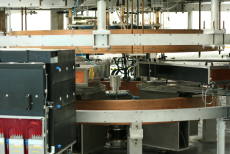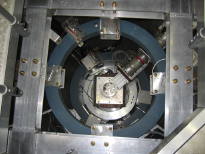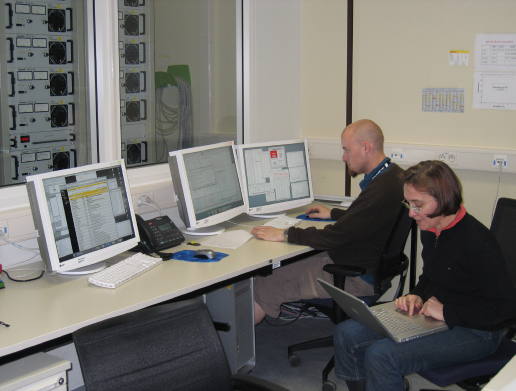
Wide-Angle Neutron Spin Echo Spectroscopy
Neutron spin echo spectroscopy is amongst the most complex experimental techniques for studying materials and fluids. Invented by Prof. Feri Mezei in the early 1970s, the technique is capable of measuring excitations in materials with extremely high precision. For example, the slow movement of atoms in glasses, liquids and solids, the movement of molecules in polymers, and the slow rotation of magnetic atoms in disordered magnets; these are all examples of processes that take place at these tiny energies.
The precision of the technique comes from careful manipulation of the magnetic properties of a neutron beam, where we use the neutron's spin to label its velocity and therefore it's energy. This provides a high accuracy without sacrificing the data acquisition rate. Another advantage is that because the instrument performs a Fourier transform of the sample excitation spectrum, we obtain our data in the time domain, and we can de-convolute the measured data and the instrument resolution function by a simple division.
SPAN/V5 at the Hahn-Meitner Institut (HMI) is a prototype of a wide-angle design of spin echo instrument. Through a radially-symmetric arrangement of the magnetic fields, it is possible to measure neutron spin echo simultaneously over a very wide scattering angle.


Figure 1: A photograph of SPAN at HMI, Berlin, showing the horizontal magnetic symmetry (left), and a view of the sample position from above (right).
To control and exploit the sensitivity of neutron spin echo, we require both extremely fine instrument control and a good experimental "situation awareness", and since each experiment is different and strongly sample-dependent, it is very difficult to hard-wire a GUI for such tasks. On top of this, we require a solid, reliable system, because beam time at the facility costs thousands of euros per day, and it is expected that the multi-million-Euro instrument runs flawlessly 24-7.
At HMI, we have deployed Igor Pro as an instrument control system, giving us a great balance of power, flexibility and ease of use, and immediate access to publication-quality data visualisation and analysis tools.
Running on Apple workstations, we take advantage of the stability of Igor coupled to a real multi-tasking Unix environment, and spread our windows over two high-resolution, wide-screen displays, which allows us to continuously control and monitor the status of each instrument component in real time.
Figure 2: Screen shot of Igor Pro controlling SPAN, spread over 2 wide-screen monitors.
Igor communicates directly with the 32 power supplies using National Instruments Ethernet-GPIB controllers. For our in-house custom electronics, we have written an XOP with wrappers in C++ to connect to devices over the LAN, using CORBA with omniORB4 as middle-ware. We use the standard Igor routines for RS-232 communication to the sample environment and velocity selector controls, using Keyspan USB-RS-232 adaptors. These features of Igor saved us months of development time. Indeed, once all the preparations were made, the actual coding time from nothing to a full user service was measured in weeks.

Figure 3: SPAN in use. Visible in the background are some of the Heinzinger power supplies, which are essential for fine corrections to the magnetic fields in the instrument.
Lastly, the WaveMetrics technical support was outstanding. Our e-mails were answered within 24 hours. Within the next 24 hours, WaveMetrics had compiled our source code, tested it, and sent a bug-fix back to us!
THANK YOU WAVEMETRICS!
Phil Bentley, Catherine Pappas, Hahn-Meitner Institut, Berlin

Forum

Support

Gallery
Igor Pro 9
Learn More
Igor XOP Toolkit
Learn More
Igor NIDAQ Tools MX
Learn More
